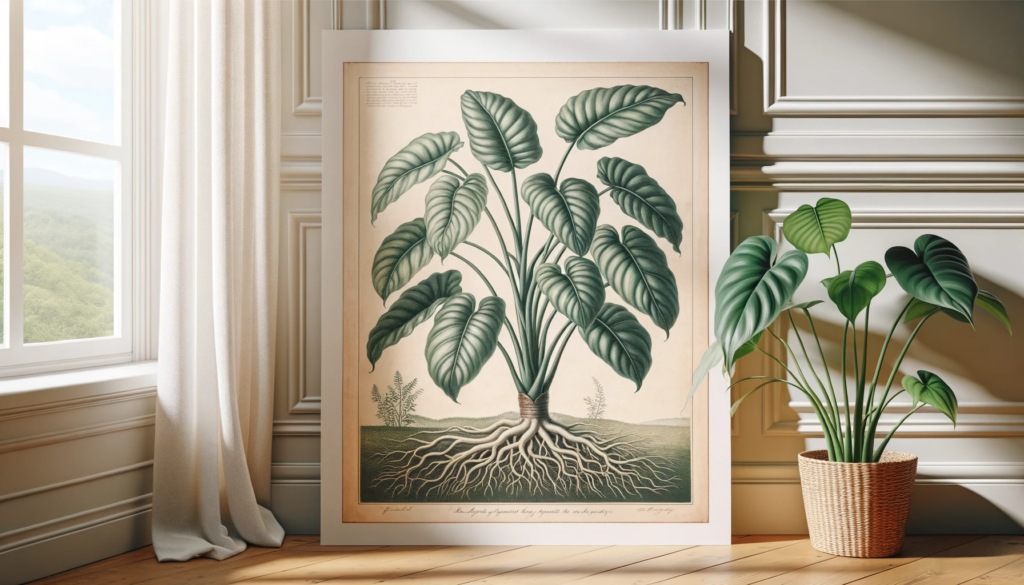Philodendrons, with their lush foliage and adaptability, have become a favorite among plant enthusiasts and beginners alike. But what makes them so popular? “Are Philodendrons Easy to Care For?” is a question many ask.
Let’s dive into Philodendron care and discover why these plants are considered easy to care for.
Key Insights:
- Versatility in Appearance: From heart-shaped leaves to striking variegations, there’s a Philodendron for every aesthetic preference.
- Tolerance to Various Conditions: Philodendrons can thrive in different light conditions and forgive occasional neglect.
- Minimal Care Requirements: They require basic care, making them suitable for novice and experienced plant owners.
- Variety of Species: The Philodendron genus offers a wide range of species, each with unique care needs and appearance.
The Allure of Philodendrons
Originating from the Greek words “Philo” (love) and “Dendron” (tree), Philodendrons are literally “tree lovers”. Many species of this plant climb trees in their natural habitat, showcasing their adaptability and resilience. Their ability to thrive in various conditions makes them a popular choice for indoor gardening.
Why Philodendrons Stand Out
- Adaptable to Light Conditions: While they prefer bright, indirect light, many species can tolerate lower light levels. This adaptability means they can be placed in various home parts, from well-lit windowsills to dimly lit corners.
- Watering Flexibility: Philodendrons prefer their soil to be on the drier side. This means they can tolerate periods of neglect, making them perfect for those who might forget to water now and then.
- Minimal Fertilization: A monthly feed during the growing season with a balanced fertilizer is usually enough to keep them happy.
- Pest Resistance: While they’re not immune, Philodendrons are less susceptible to common houseplant pests, reducing the need for frequent treatments.
Additional Reading: Comprehensive Philodendron Care Guide
Popular Philodendron Varieties
Philodendrons come in various shapes and sizes. Here are some popular varieties that plant enthusiasts adore:
- Heartleaf Philodendron: A classic choice known for its heart-shaped leaves. It’s versatile, easy to care for, and perfect for beginners.
- Philodendron ‘Brasil’: This variegated variety boasts stunning yellow and lime green leaves, adding color to any space.
- Philodendron ‘Moonlight’: Its bright chartreuse foliage stands out, making it a favorite for those looking to add a vibrant touch to their plant collection.
- Philodendron ‘Red Congo’: The leaves of this variety start as a bright red and mature to deep green, offering a beautiful color transition as they grow.
Additional Reading: Philodendron Propagation Techniques
Caring for Your Philodendron: Essential Tips
Philodendrons are relatively easy to care for, but a few tips can ensure they thrive:
- Light: While adaptable, aim to provide them with bright, indirect light for optimal growth.
- Water: Wait until the top inch of the soil is dry before watering. Overwatering can lead to root rot, a common issue with houseplants.
- Soil: A well-draining potting mix, such as a blend of peat, perlite, and pine bark, is ideal.
- Fertilization: Feed them once a month during their growing season. Avoid over-fertilizing, as this can harm the plant.

Are Philodendrons Easy to Care For? – Unraveling the Truth
Understanding the Philodendron’s Popularity
Philodendrons, with their lush green leaves and adaptable nature, have become a favorite among plant enthusiasts and beginners alike. Their resilience and ability to thrive in various conditions make them a top choice for indoor plant collections. But the question remains: are philodendrons genuinely easy to care for? Let’s dive deep into the world of philodendrons and uncover the secrets to their care.
Factors Influencing Philodendron Care
1. Light Requirements
Philodendrons are versatile when it comes to light. They can thrive in bright, indirect light but tolerate low-light conditions. However, it’s essential to avoid direct sunlight, which can scorch their leaves.
2. Watering Needs
Overwatering is a common mistake among philodendron caregivers. These plants prefer to dry out between waterings. It’s crucial to ensure the soil is well-draining to prevent root rot.
3. Soil Composition
A well-draining potting mix is vital for philodendrons. Many plant enthusiasts recommend a mix of peat, perlite, and pine bark for optimal growth.
4. Humidity and Temperature
While philodendrons can adapt to average home humidity, they flourish in higher-humidity environments. Regular misting or using a humidifier can benefit the plant. They prefer temperatures between 65°F and 75°F.
5. Fertilization
During the growing season, it’s beneficial to feed philodendrons with a balanced liquid fertilizer every 2-4 weeks. However, in the dormant winter months, it’s best to reduce feeding.
6. Pruning and Maintenance
Regular pruning can encourage bushier growth. Removing yellow or damaged leaves can keep the plant healthy and aesthetically pleasing.
Common Philodendron Varieties and Their Care
Philodendrons come in various shapes and sizes. Here are some popular varieties:
- Philodendron Heartleaf: Known for its heart-shaped leaves, this variety thrives in indirect light and requires moderate watering.
- Philodendron Brasil: This variety boasts beautiful variegated leaves with streaks of yellow and lime green. It’s adaptable to various lighting conditions.
- Philodendron Birkin: Recognized by its striking pinstripe leaves, the Birkin prefers bright, indirect light and well-draining soil.
Potential Challenges in Philodendron Care
While philodendrons are relatively easy to care for, they’re not entirely without challenges:
- Pests: Spider mites, aphids, and mealybugs can sometimes infest philodendrons. Regularly inspecting the plant and using natural insecticides can help combat these pests.
- Diseases: Overwatering can lead to root rot, a common issue with philodendrons. Ensuring the plant has well-draining soil and a proper watering routine can prevent this.
Conclusion
In conclusion, philodendrons, with their adaptability and resilience, are indeed easy to care for, making them a perfect choice for both novice and seasoned plant enthusiasts. By understanding their basic needs and providing them with the right environment, you can ensure your philodendron survives and thrives in your care.
FAQs
1. Are philodendrons toxic to pets?
Yes, philodendrons contain calcium oxalate crystals, which can be toxic to pets when ingested. It’s advisable to keep them out of reach of pets.
2. How often should I repot my philodendron?
Generally, philodendrons should be repotted every 2-3 years or when their roots outgrow the current pot.
3. Can philodendrons grow in water?
Yes, philodendrons can be propagated and grown in water. However, for long-term growth, soil is recommended.
4. Why are the leaves on my philodendron turning yellow?
Yellow leaves can indicate overwatering, inadequate light, or a nutrient deficiency. It’s essential to assess the plant’s environment and make necessary adjustments.
5. Do philodendrons purify the air?
Yes, like many houseplants, philodendrons can help purify the air by removing toxins like formaldehyde.
6. Question: Can philodendrons be grown outside?
Yes, philodendrons can be grown outside, but their suitability for outdoor growth depends on the climate. In tropical and subtropical regions where temperatures consistently stay above 50°F (10°C), philodendrons can thrive outdoors year-round. However, in areas with colder temperatures, they are best grown in containers and brought inside during the colder months to protect them from frost, as they are sensitive to cold and can be damaged or killed by freezing temperatures. If you choose to grow them outdoors, ensure they are planted in a location with well-draining soil and receive indirect sunlight to prevent leaf burn.



